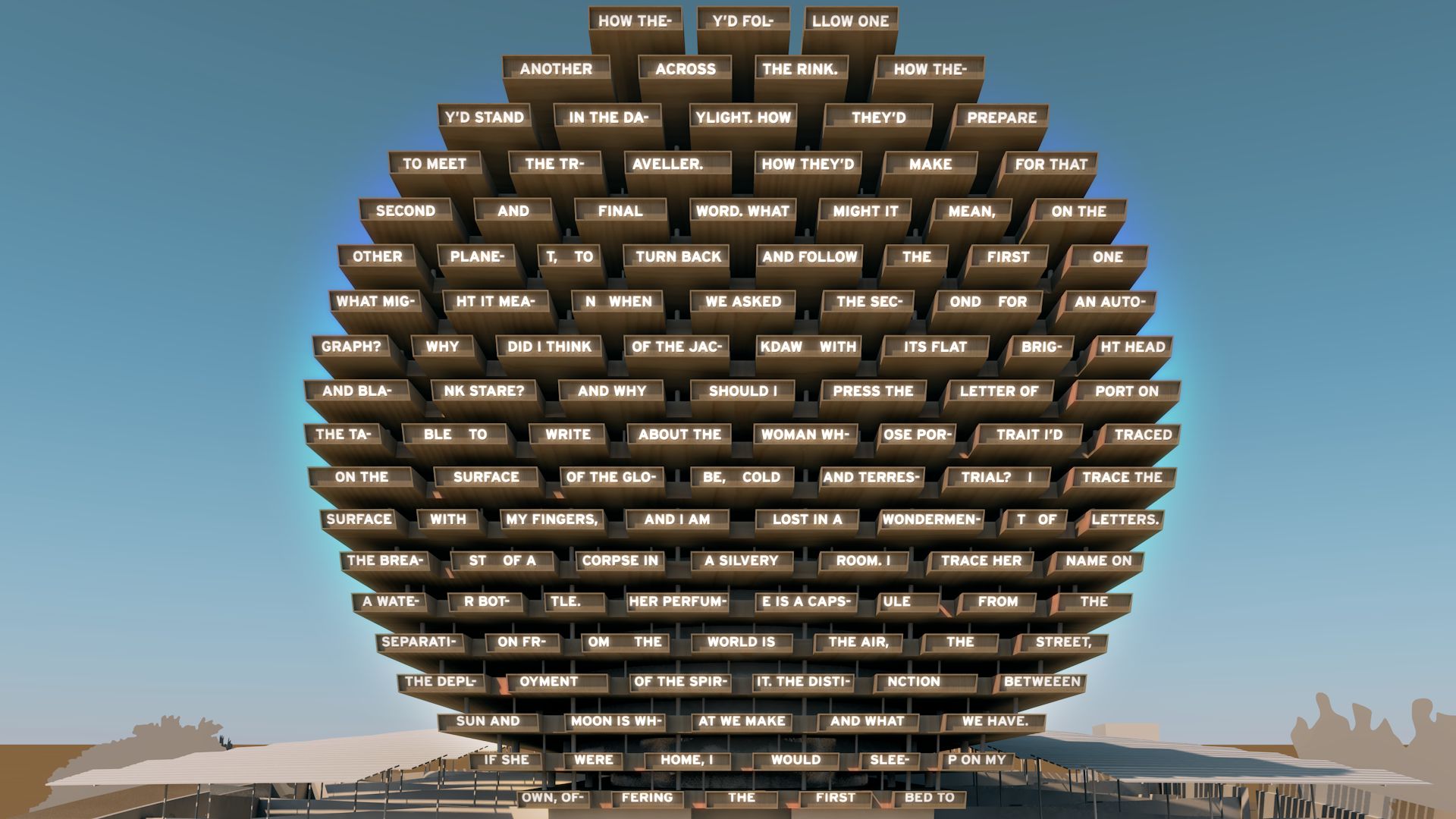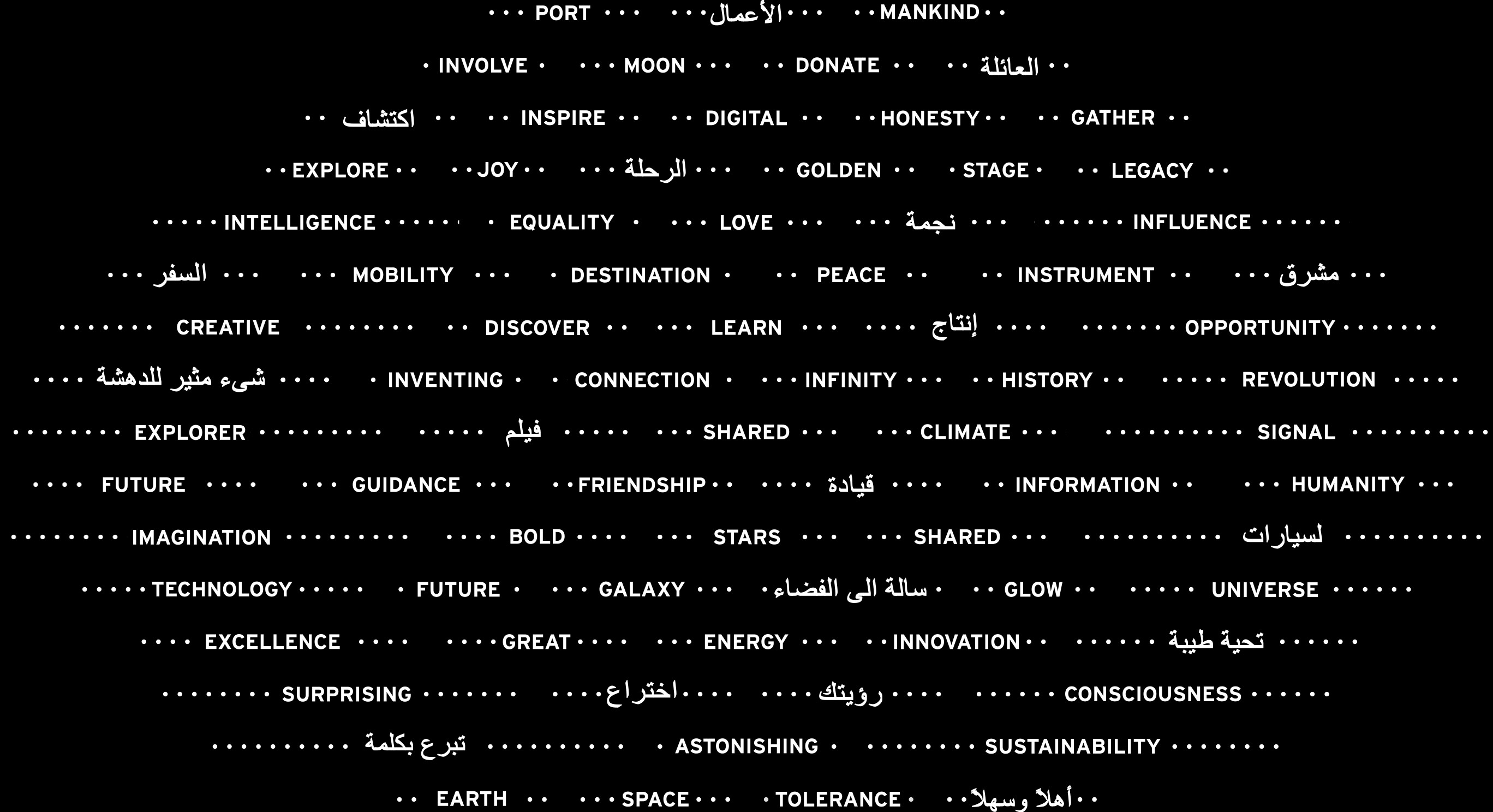This was artist Es Devlin OBE’s inspiration for the UK Pavilion’s AI poetry algorithm. Each visitor will donate a word to the AI which will generate a couplet of poetry. These couplets will build one unified collective message and be projected on the front façade of the UK Pavilion. Avantgarde, the design and content team lead, appointed an algorithm team to build an AI model and trained it to learn to write poems by feeding it with millions of words of English poetry.

Did you know?
The algorithm was trained on 15,000 poems from over 100 British Poets – that equates to half a million lines of poetry in total.
The AI began to recognise the structures and forms of poetry and was able to generate its own couplets by emulating the style of what is has read. Over half a year, the algorithm team worked with a group of poetry experts to analyse the generated text and refine the algorithm. The team guided the AI toward a style inspired by all the reference material, while avoiding topics and overly experimental output that veered too far off course.
Computer-generated poetry has a long history, but what makes this project so unique is the collaboration between a large number of developers and poetry experts working over an extended period to iteratively refine the output.
Who are the poetry experts?
- Poetry Archive: it produces, acquires and preserves recordings of poets reading their own work out loud and makes excerpts freely available online with a dedicated Children's Poetry Archive.
- Poetry Society: it aims to promote “a more general recognition and appreciation of poetry” and represents British poetry both nationally and internationally with over 4,000 members worldwide.
- Scottish Poetry Library: it is an unique national resource and advocate for the art of poetry, and Scottish poetry in particular.
The algorithm team in collaboration with Google Arts & Culture, the UK Pavilion's Supporting Partner, has ensured that the algorithm, while working well in development conditions, would also work as an engaging experience that visitors can interact with in real time.
In the Pavilion structure itself, LUX Technical provide the controlling ‘brain’ that puts the poetry on display. At the same time the system LUX Technical created provides all this data back to the visitor on their own device. With the help of LUX Technical, Luke Halls ensured that the data the algorithm provided was able to be displayed on the different screens throughout the Pavilion, the collective message on the front façade and the donated words in the Choral Space.
Can a computer programme write a poem or is this a singularly human trait? The debate will continue but there is no doubt that the algorithm is producing some evocative lines:

and soon i am staring out again,
begin to practise my words, expecting my word
will come. it will not. the wind is calling.
my friend is near, i hear his breath. his breath
is not the air. he touches me again with his hands
and tells me i am growing old, he says, far old.
we travel across an empty field in my heart.
there is nothing in the dark, i think, but he.
i close my eyes and try to remember what i was.
he says it was a important and interesting day,
because i put in his hands one night
the box of light that had been a tree.
In an age of increasing automation, what does it mean to reimagine poetry beyond a task confined to the mythical lone genius?
To transform it into an endeavour carried out by an entire crowd of visitors, conspiring with a cluster of computers?
Could this hybrid intelligence be more representative of humanity's Breakthrough Message than any singular human endeavour?
What’s next for AI?
